The First Of Many
Our first trip as LastXplorer was supposed to go without a hitch and it did… almost
A rough plan was beginning to formulate. We wanted to go somewhere exciting, worthy of a first trip. But it also needed to give us chance to recharge the batteries and regain that all important focus after months of planning and stress.
After many calls back and forwards, bouncing ideas around – including some completely and outlandishly epic trips which would have taken a year to plan – fate stepped in and made the decision easy.

I’d been talking to a mate up in Queensland about being involved in LastXplorer and during those discussions we were invited to camp over at his place in the Sunshine Coast Hinterland. So, with that in mind we were heading to Queensland. Now for James (Hillboy) this is a short two-hour trip north, but for me just getting there is a bit of an epic in itself, and this was also the cause of some stress in the planning process.
Now I know my Rangie is reliable (in Land Rover terms) having covered over 20,000km in it already with only a few minor niggles (mostly down to age and wear and tear/user stupidity) but with this trip I’d be covering around 3500km in about ten days. So, there were some concerns jumping around in the back of my head. After all it is a Land Rover.
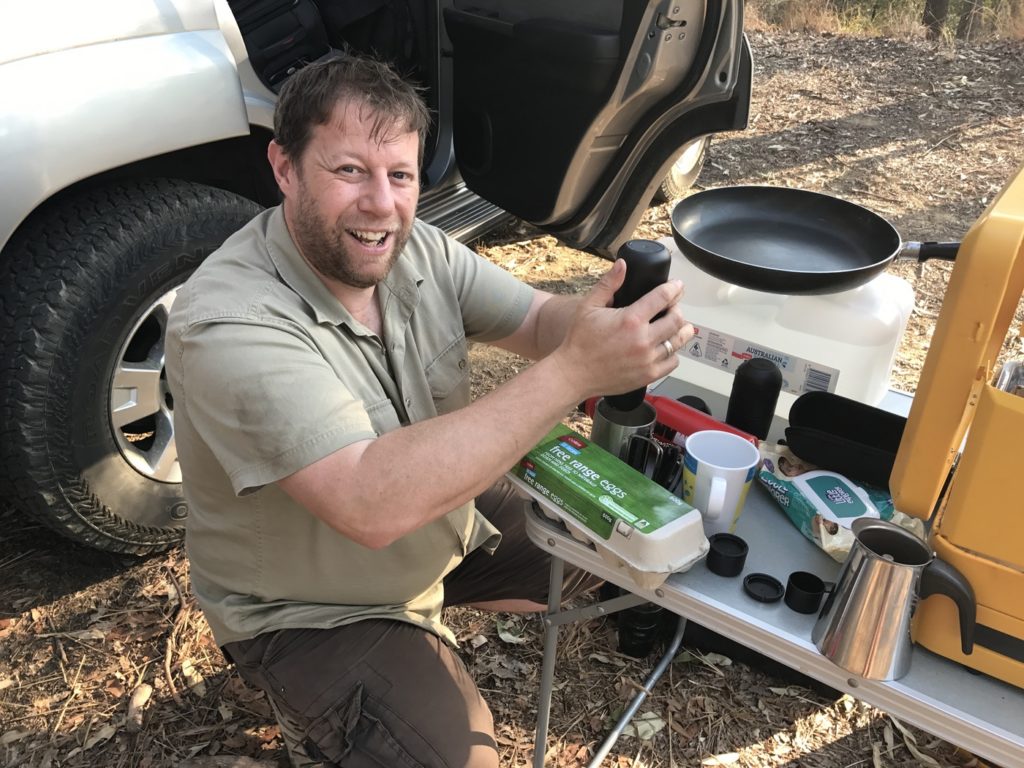
So, with this stopover organised we then had to just finalise the final destination. Which to be honest, was pretty straight forward. Fraser Island it would be.
Lists were made and checked off and soon my departure date was getting near. All the gear was organised and packed. I’d even purchased a cheap roof top bag from Aldi to hold a lot of my camping gear in. I was set and ready to go – or so I thought. You know when you get that nagging feeling in the back of your head, about seven hours from home, that you may have forgotten something, but not sure quite what it is. Well, that was me not long before reaching Byron Bay on the NSW North Coast. When I pulled in for fuel, a quick check round revealed I’d not only forgot to pack my camp chair but also my small hiking tent. Bugger.
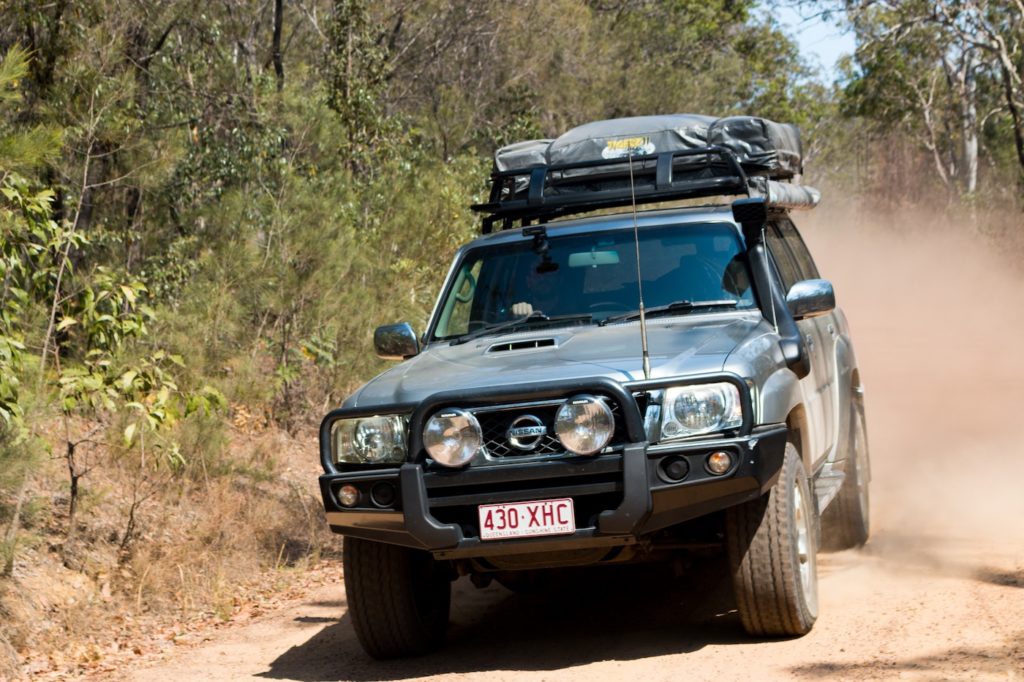
With this discovery, it was a quick jump onto Google to find the nearest outdoor store which would be open on my arrival to the Gold Coast. Tentworld was found and loaded in. New tent and chair purchased, and journey completed (I’d discover my chair and tent were still stacked up against the garage wall waiting for me to load up on my return). Not the end of the world but an expense I could have done without. Lesson learned.
First Night Proper
Well the first leg was sorted I’d made it to the Gold Coast in one piece. I was meeting up with James before leaving to head further north tomorrow.
Before turning in for the night I wanted to check over the gear on the roof racks. It was here I discovered the Aldi roof bag had disintegrated over the first leg and wasn’t going to work anymore. Just shows you get what you pay for sometimes. All credit to Aldi, it was returned once back in Sydney and I was refunded the full price.
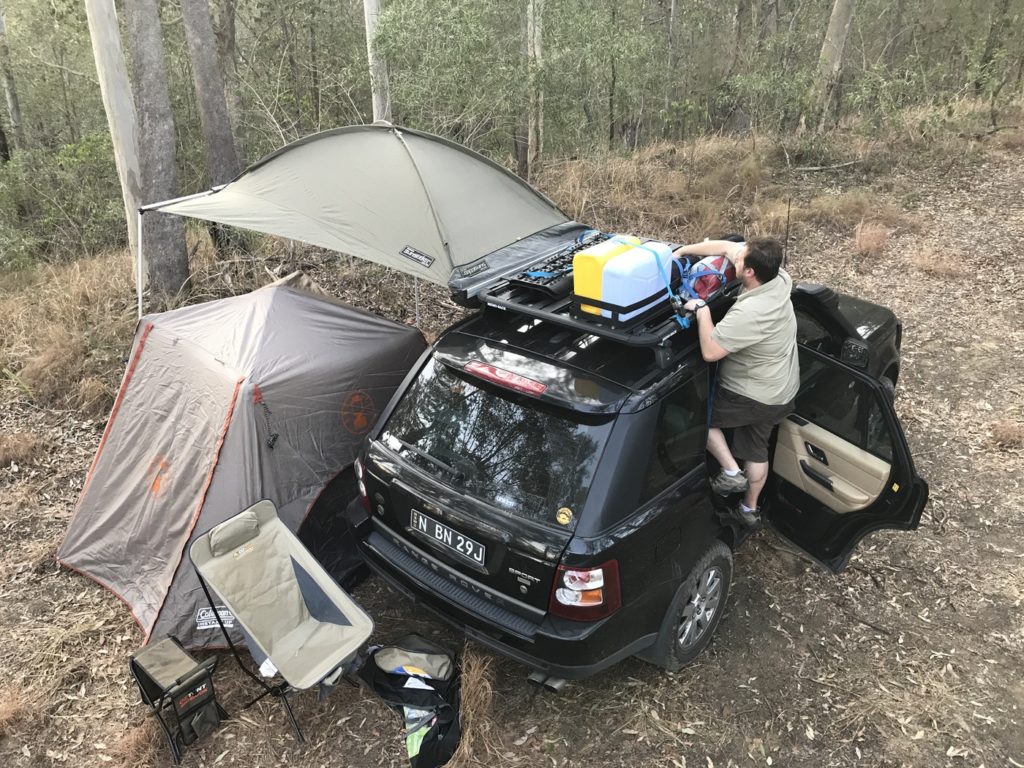
After a restless night fending off an attacking mozzie or two, we awoke early, and after a quick stop for some last-minute supplies jumped on the freeway and headed up the coast. It wasn’t long, however, before the curse of the Range Rover struck. My suspension light came on. Now I’d been using adjustable rods and set them all so the Rangie stayed in extended (off-road) mode, and had just done a lane change just before the light came on, so wondered if it was to do with that and the extra weigh up top causing something weird to happen. Turns out I’d not quite locked in one of the height adjusters properly, and it must have moved enough to throw the warning light. Oops. Easily fixed and after a restart the light was gone. Lesson learned – don’t rush things and learn how to fix your vehicle.
We made it to our mate’s place by early afternoon just in time for a quick tour and to set up camp before settling down in front of the fire. Many tales were told that night, most of which can’t be repeated on LastXplorer, so you’ll just have to take our word for it, but a great time was had by all.
Needless to say, we all slept well that night and the gentle breeze seemed to help no end. Next morning, feeling a little dusty, we packed up. I took the opportunity to move some stuff around, so the centre of gravity was a little lower before heading over to Fraser.
Rainbow And Inskip, But First...
I’d made the call that we would have enough time, that instead of heading straight to Inskip Point we should take in a little short cut I knew about. It knocks a fair few highway kilometres off the trip whilst giving us chance to explore some of the Noosa back country and also pay a visit to Harry’s Hut. I’d worked out if we didn’t get held up much today we’d also easily get to Rainbow Beach in time to book the barge tickets for the morning, thus meaning we could leave nice and early.
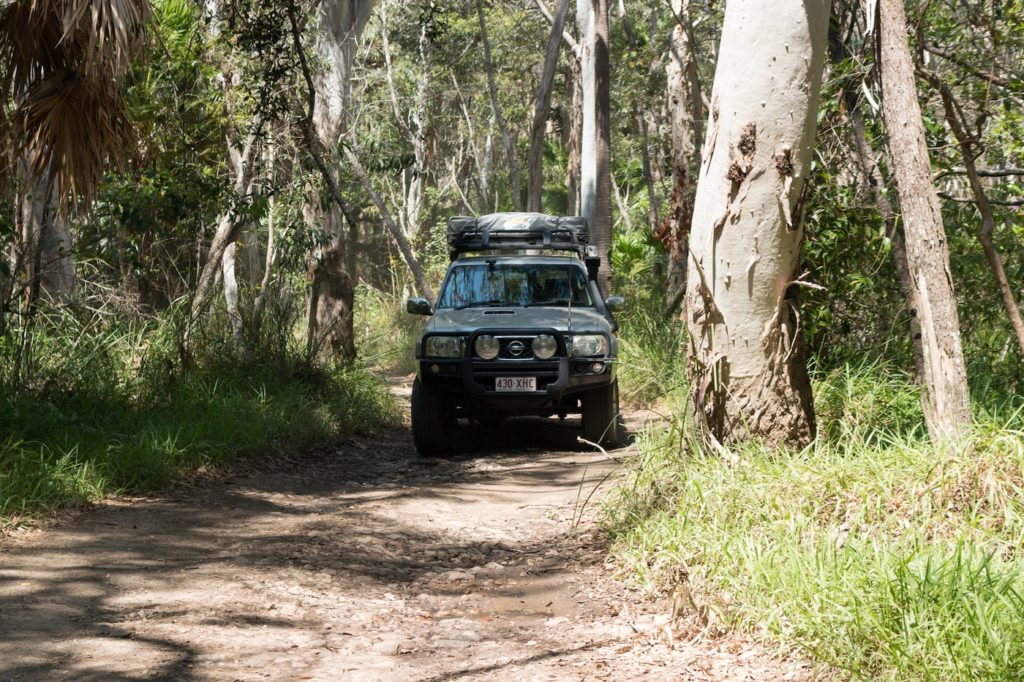
Just outside the town of Kin Kin we followed Kin Kin Road and followed the signs to the Cooloola Way. As we got nearer the tar turned to dirt and it was bumpy enough to warrant airing down a little. Now depending on the weather, the Cooloola Way is either a bumpy but easy track or if there’s been rain it can quickly turn in to a sloppy mess. As it hadn’t rained in this part of Queensland for a good few months it was definitely going to be the former, which meant our progress should be straight forward (a quick search on YouTube will show you how bad it can be). The route itself offers great scenery along the drive although there is some commercial logging in the area it is relatively limited, a certainly doesn’t ruin the trip in any way. After about an hour or so we took the turn off to Harry’s Hut.
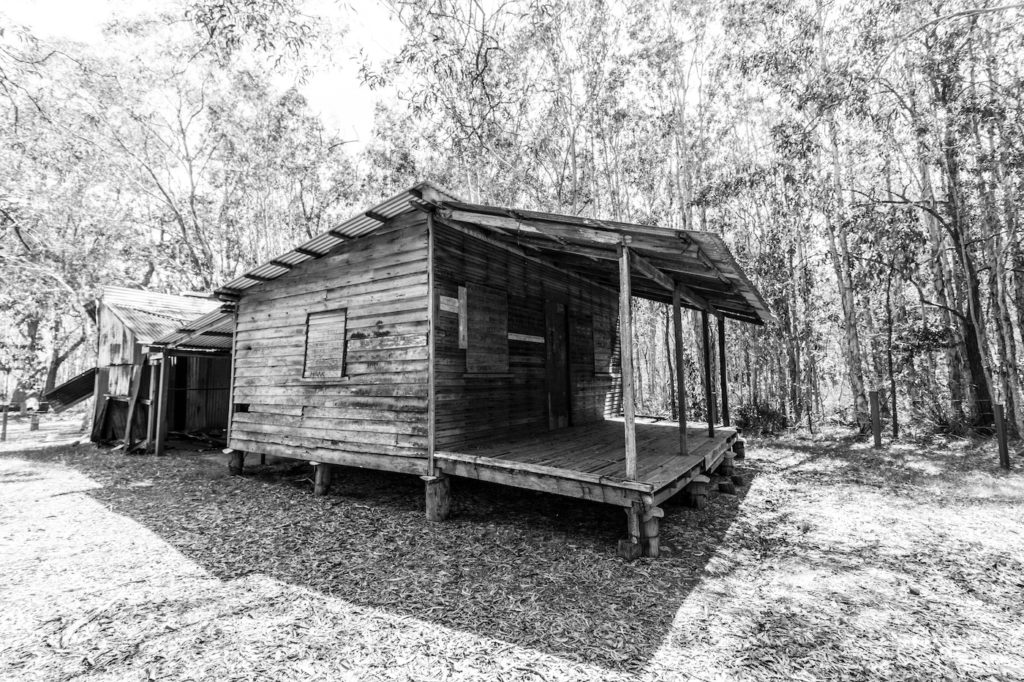
The hut is set on the banks of the Noosa river and is a great spot to launch a canoe or kayak from. Harry’s Hut is named after Harry Spring, who purchased the hut in the 1960’s. It was originally used as a logger’s hut and was in use until the 1950’s. After a good look around and the obligatory photos we back tracked up Harry’s Hut road and re-joined the Cooloola Way. From here the track got noticeably more rutted and in parts progress was slow. You certainly wouldn’t want to try it in smaller SUV or camper without taking a lot of care.
We continued on for another couple of hours with the track changing from hard dirt to soft sand and dust in places. You just needed to be alert as some areas had hidden ruts just behind the hill crests waiting to catch you out. One or two were particularly rough. It wasn’t long however, till we re-joined Rainbow Beach road.
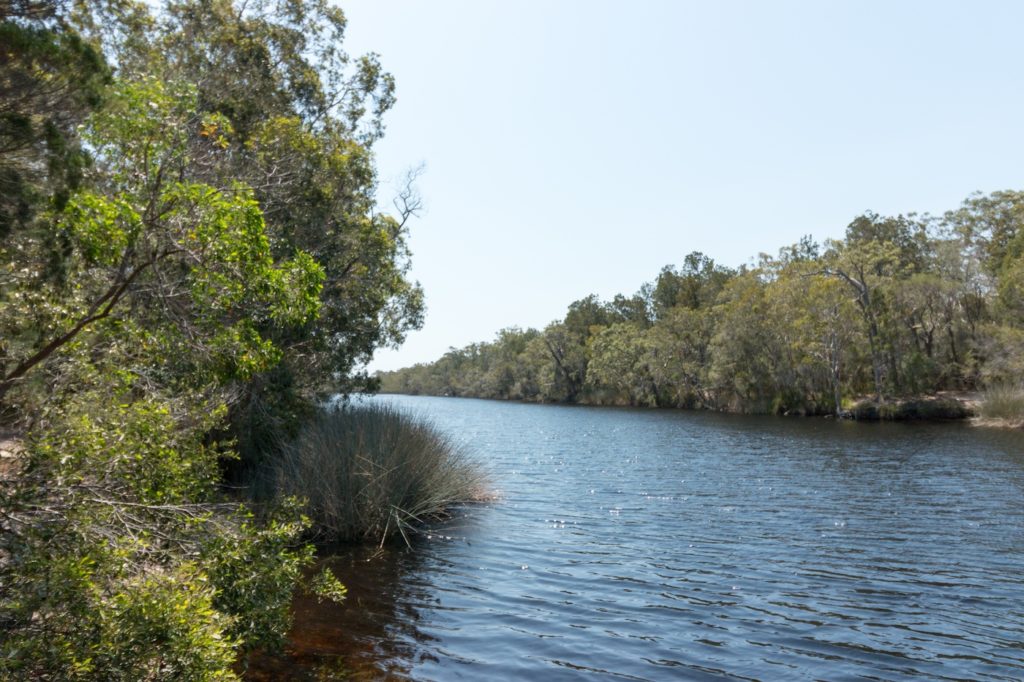
Last Night On The Mainland
After a gentle drive into Rainbow Beach on lowered tyre pressures, we stopped in at the Manta Ray Barge offices to book our tickets for the next day. We also collected stickers for the permits we’d already purchased online. From here, it was a short trip into town to top up the tanks and grab a late lunch.
Normally this is a straight forward occurrence, and is for most people, unless you are a complete clutz (or me). Now I’d also brought along a jerry can for fuel which was mounted to my roof rack, no problems there you might think, and getting it down was easy. Only getting it back up was to prove to be somewhat more tricky. When I say getting it back up, I of course mean me getting up there to re-attach the now full jerry can with slippery diesel covered shoe soles. Not sure what happened, but I lost my footing, ended up on the deck and had a full fuel can sitting on top of me. I thought I’d broken my leg at first and the trip was over before it had begun. I was lucky… turned out to be a bad bruise and a couple of cuts (now with fuel in them). But other than that, I was okay.

From here we headed out to our campsite – I was thinking nothing else could go wrong so far as it’d been a bit of a catalogue of errors on my part so far. But oh no, Murphy raised his head again. As we pulled into the campsite there was a very soft section, James got through just, but it slowed him down. Which, in turn lost me all momentum to get through said soft sandy section. I came to a halt. Tried to back out and ended up sinking further. An hour later I was free after letting more air out of the tyres and using a combination of TREDs and snatching. To say it was a touch embarrassing would be an understatement to say the least.
We set up camp and began to reflect on the last few days as we tucked into pork tacos. What a great spot this was and if the rest of the trip (despite the couple of setbacks) was going to be this good, we were in for a treat. To cap it all off we were treated to one of the best sunsets I’ve seen in a long time.
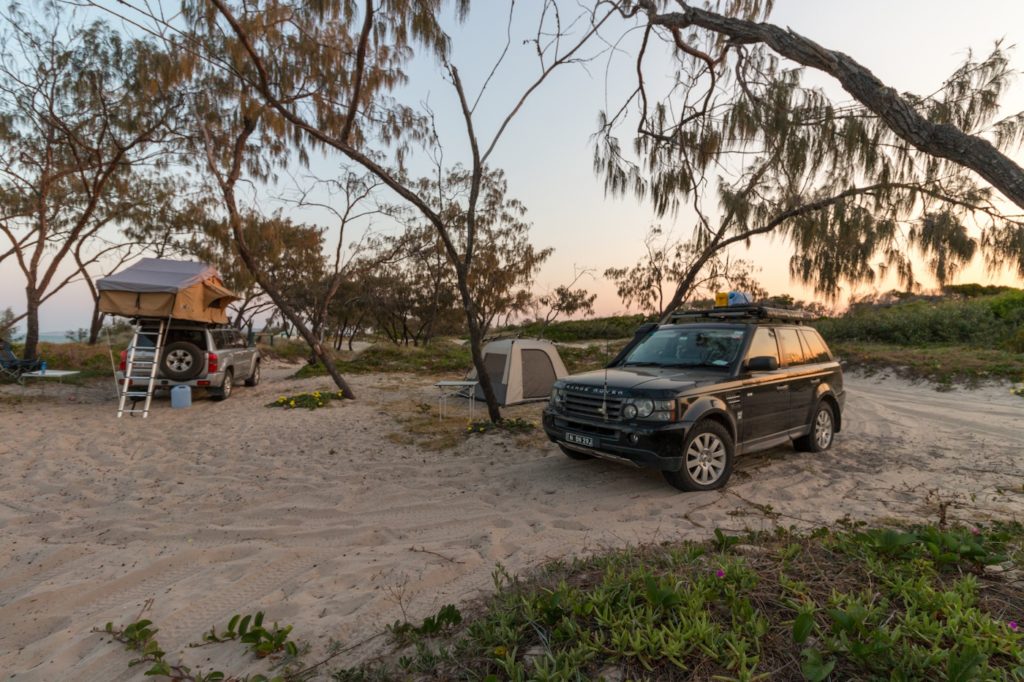
I slept well that night with the sound of the waves crashing in the background. Although I woke early, keen to get going and get onto Fraser as soon as possible. We had a fairly busy schedule and I know we both wanted to make the most of it.
After breaking camp, we headed down the beach to the barge point. We only had a short wait and we were on. The crossing from Inskip Point only takes a few minutes and you can feel the excitement and apprehension, in equal measures, of the passengers grow as the barge nears the Island. How soft would it be? Would I make it past the first corner? How high up the beach will the tide be? These questions and many more were written on the faces of our fellow travellers. We would all soon find out as the ramps lowered and we each made our way out onto the unknown.
Limited Offer - Get The December Issue Free
Just to say thank you for stopping by…
For February only, you can get the December Issue of LasXplorer free.
This is a rock solid issue with some very cool trips in it! Click here to get your free issue.
Going green
What’s left behind
Overland travel doesn’t have to cost the Earth
Way back in 1996 I had to do an environmental impact study as part of my college diploma. We had to choose an outdoor activity and look at the way it affects the landscape and environment. As a keen off-roader (yes even back then I was an environmental terrorist), I chose to base the piece on “Green Laning” as it was referred to in the UK. At this time there was a lot of pressure mounting from various action groups (including walkers and National Parks) to ban 4WDs from the countryside.
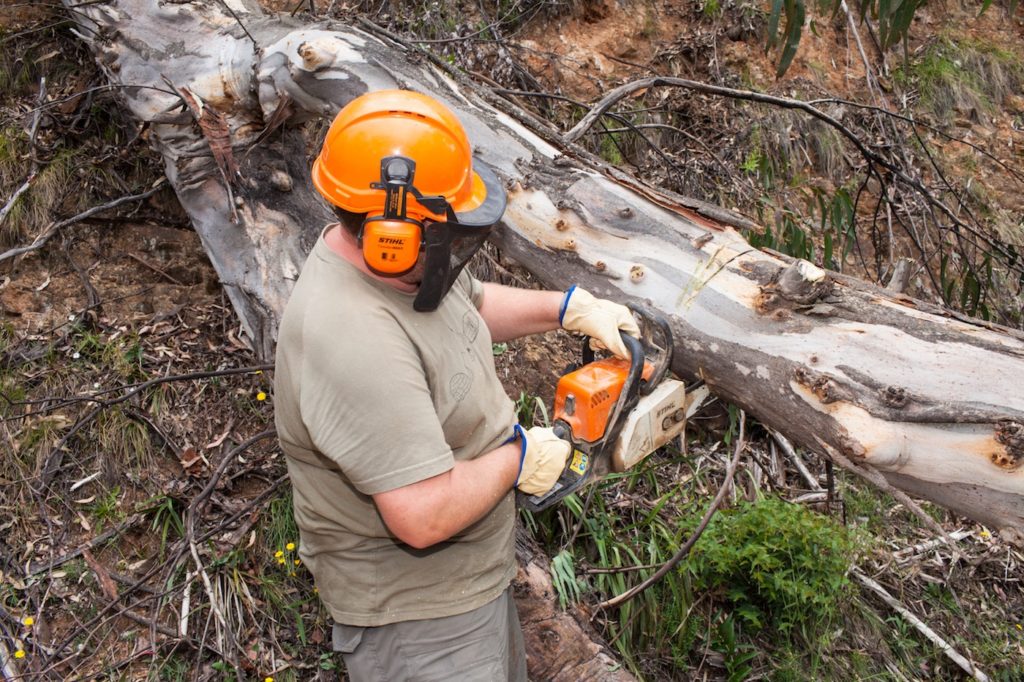
Back then most of the 4WD clubs and organisations employed Rights of Way officers to ensure that roads weren’t closed down or blocked off without proper consultation or on the whim of some “righteous” individual. One of the things I found during the study was that responsible and sensible use does very little damage and in fact can help to keep tracks open. Making them accessible for all, including the emergency services to use and enjoy.
Does this sound familiar?
Two decades later similar pressures are being applied to councils and parks authorities to limit or stop 4WD/SUV access to certain areas here in Australia. These groups are looking for any excuse to further their cause, and guess what, a lot of individuals are giving them that excuse. So from the off let’s make sure we do the right thing and look after this resource as it might not be there the next time we want to use it.
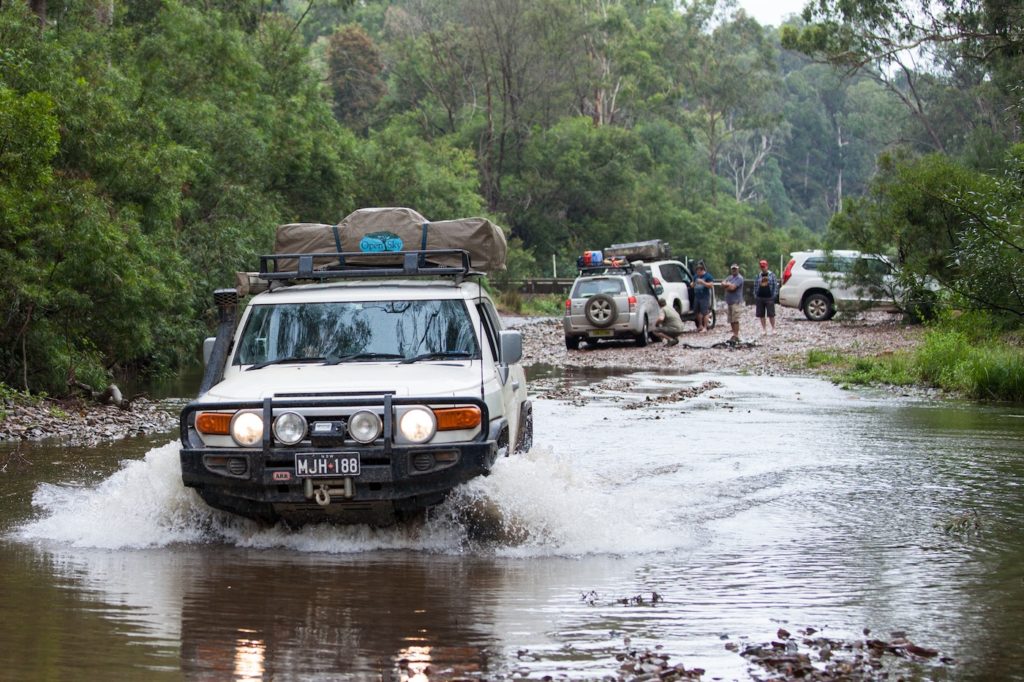
So what should we do?
A good place to look before you head off is the Tread Lightly website, although it’s predominantly aimed at the US market, a lot, if not all of the principles relate to tracks and environment here:
Travel Responsibly on land by staying on designated roads, trails and area. Go over, not around, obstacles to avoid widening the trails. Cross streams only at designated fords. When possible, avoid wet, muddy trails.
Respect the Rights of Others including private property owners, all recreational trail users, campers and others so they can enjoy their recreational activities undisturbed. Leave gates as you found them. Give right of way to those passing you or going uphill.
Educate Yourself prior to your trip by obtaining travel maps and regulations from public agencies. Plan for your trip, take recreation skills classes and know how to operate your equipment safely.
Avoid Sensitive Areas on land such as meadows, lake shores, wetlands and streams. Stay on designated routes. This protects wildlife habitats and sensitive soils from damage. Don’t disturb historical, archaeological or paleontological sites.
Do Your Part by modelling appropriate behaviour, leaving the area better than you found it, properly disposing of waste, minimising the use of fire, avoiding the spread of invasive species and repairing degraded areas.
As you can see most of the principals are pretty basic and straightforward, and are things that we all should do and most of us do anyway. But it doesn’t hurt to have them in your head when out and about or when planning your next adventure.
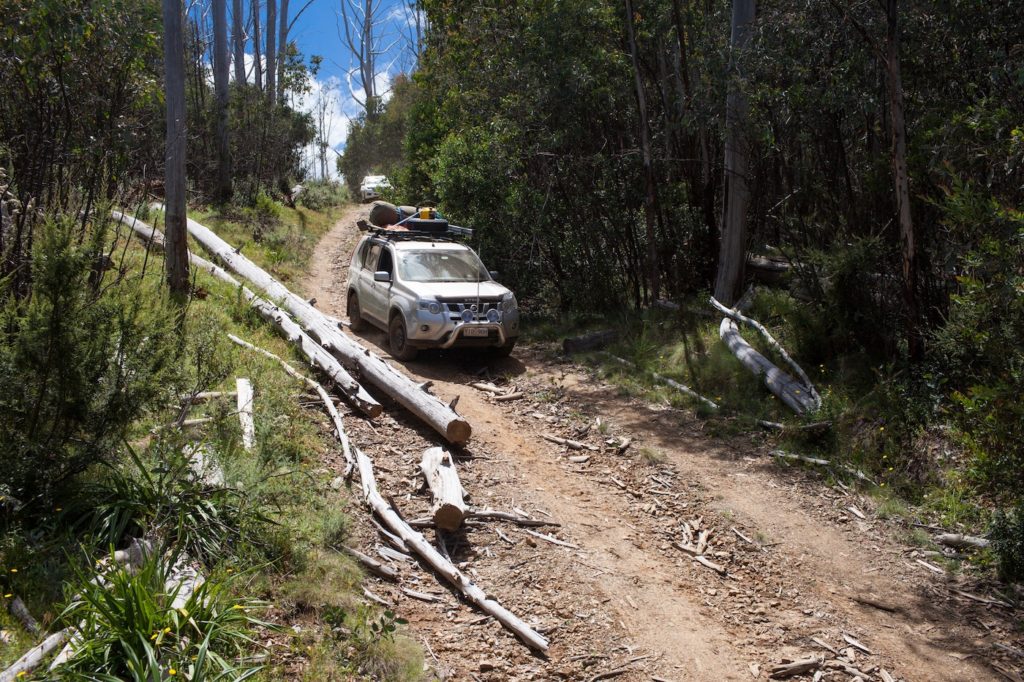
In addition to these, I like to work with the below guidelines:
- Pay attention to weather conditions before and during the trip – this can be a little tricky if planning a long time out from the departure date or if the trip is over several days or weeks
- Use appropriate tracks for the weather and your experience levels – if the weather is wet stick to hard surface tracks so as not to cause damage from slipping wheels, or if you feel uncomfortable about the route you’ve selected consider using an alternative or walking it first to see it is suitable for you
- Travel in small groups as opposed to large convoys – this minimises the visual impact of the group and also makes you less intimidating for other users
- Remove everything you bring in – don’t leave rubbish behind, nobody wants to clean up your rubbish just as you don’t want to clean up someone else’s. If you bring it in take it back out
- If your way is blocked look for an alternative track or a way over if clearing the obstacle is not an option – don’t automatically create a bypass track around, this will encourage other users to do the same and after a short time instead of being a single track there ends up with multiple lanes going deeper and deeper into the bush causing more damage.
Look after it
Looking after the bush really doesn’t require a huge amount of work, just some simple common sense approach and ideas. If we stick to them the great outdoors will remain so and still be able to be enjoyed in years to come. The best bit is it won’t cost us anything.
Falken Wildpeak AT3W 10,000km + test
Could a set of All Terrains be the only tyre you ever need?
When I purchased the Range Rover Sport about a year ago, it came equipped, as many do, with the perfect set up for cruising the streets of Sydney’s trendier suburbs. Big 19-inch wheels and fairly skinny 255/50R19 tyres. Great for low riding, but not so great for tackling rocky muddy trails or outback roads. Not ideal for a vehicle that would be used not only as a daily driver but also as a solid (but exceedingly comfortable) cross country tourer.
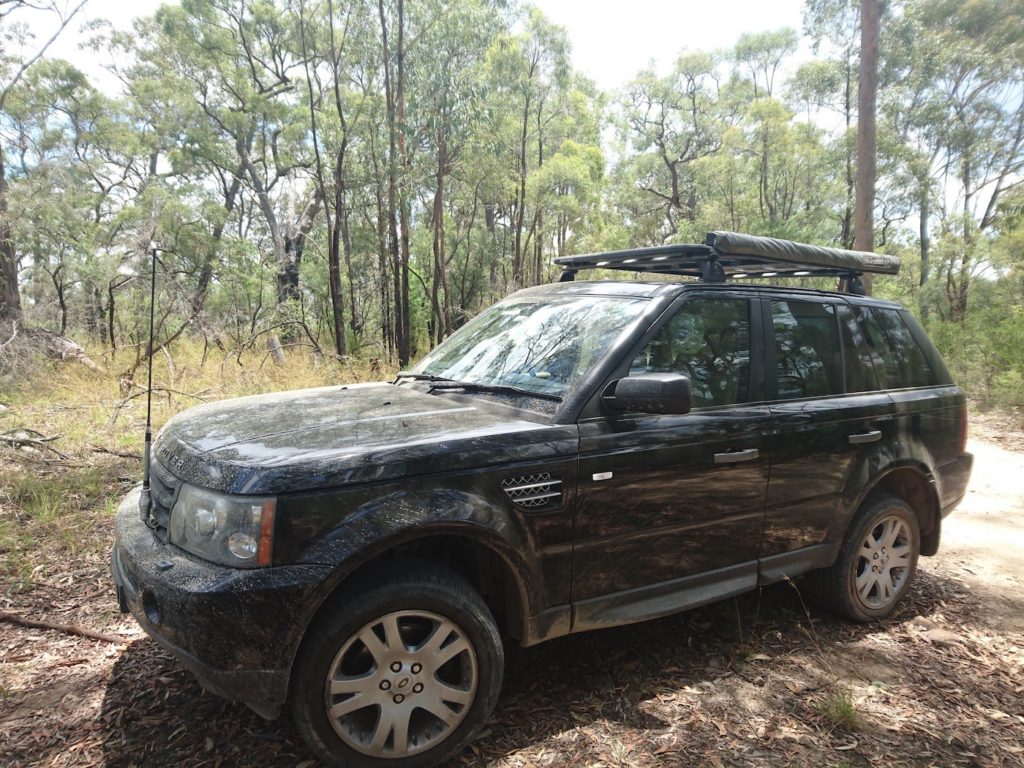
So, one of the first things I did before going too far off the highway was to upgrade the tyres. Now, I’d used Falken’s Wildpeak AT2’s on my Pajero and I really liked them, so when I heard that a new AT3W version was coming out, I was pretty keen to find out a bit more. After reading some reviews from the US (the tyres weren’t available here in Australia at that point), I decided these would be the first choice for me. So, after some enquiries, a release date was found out and I managed to secure a set for the Rangie in 265/60R18 XL. Not quite the LT construction I was hoping for, but still a size bigger than I had (just about 31″ as opposed to the standard 29″) and hopefully a damn sight more robust as well. More importantly, this size also kept everything fully legal.
Now the AT3W is dubbed as an aggressive all-terrain tyre full of cutting edge design and robustness to cope with the rigours of off-road. But that’s just marketing BS, the real test of a tyre is actually using it on your own 4WD and seeing how it performs over a range of conditions. For me, if they were half as good as the old Wildpeaks, I’d be happy. They worked bloody well, although I always felt the sidewall may have been a little soft.
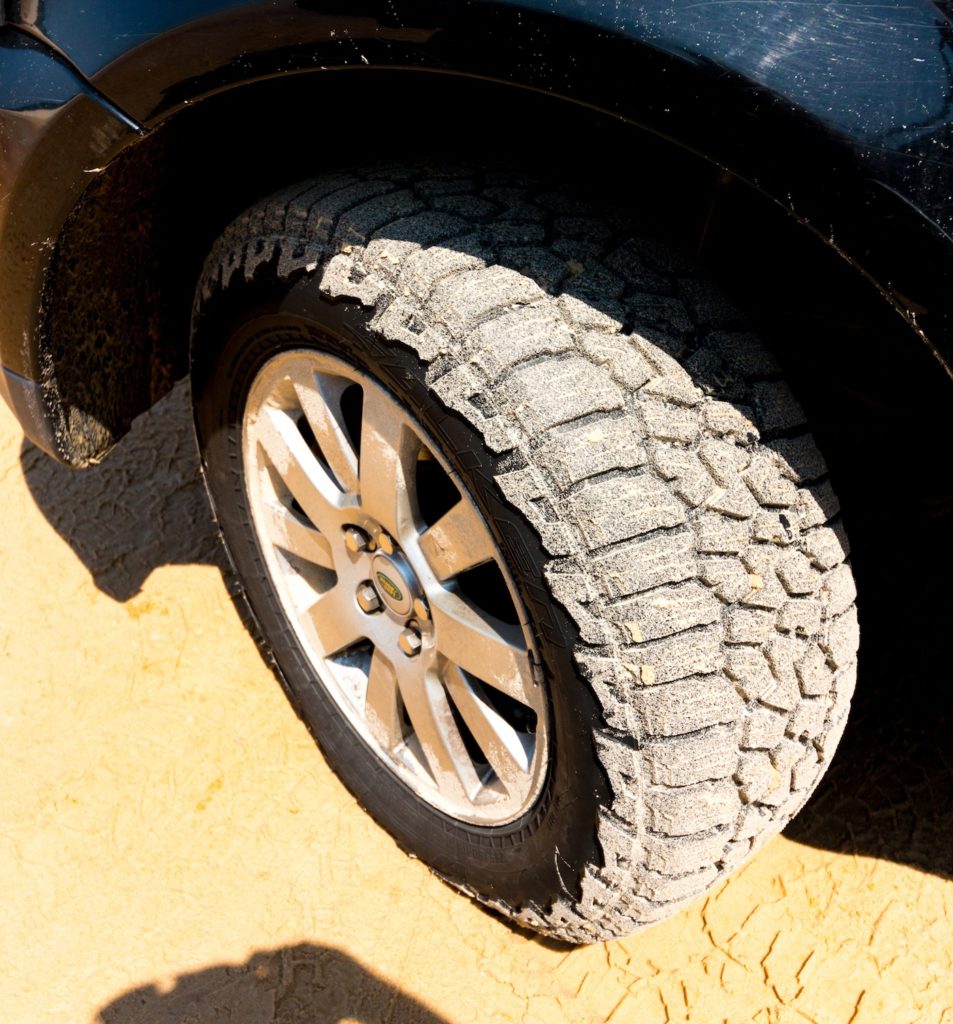
Over the last few years, A/T tyres have evolved a fair bit and there is definitely a “New Generation” of tyre out there. Hell, even BFGoodrich have updated their perennial A/T with the KO2. Which although looks very similar, by all accounts it does represent a fair jump in all-round performance. Compounds have changed and tread design has also taken a huge leap forward, allowing tyres to work really well on the street (re: not noisy), but also perform with good ability on the rough stuff. Some are being labelled as MT tyres and some as AT such as the Kuhmo MT51 and the Wildpeak AT3W. Two fairly similar tyres, both offering good on-road and off-road performance without the constant drone (and economy hit) usually associated with a full on mud terrain tyre. I’d consider both of these examples in and around the 50:50 usage marker, along with the BFG AT KO2 and General Grabber AT2.
First impressions
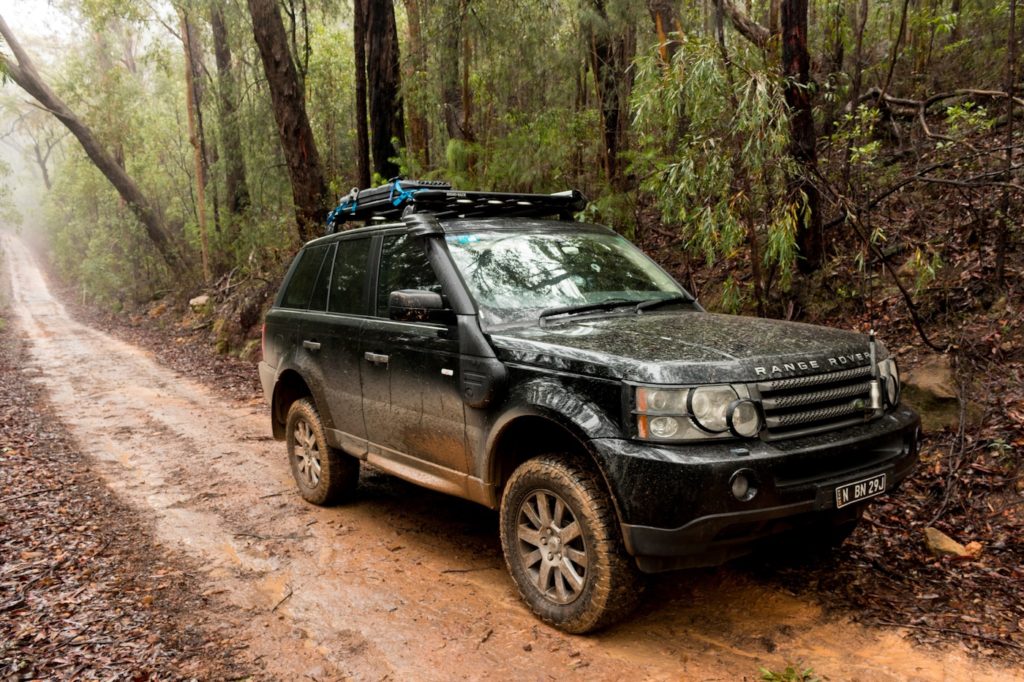
They say first impressions count, and also that looks can be deceiving, let’s hope that it’s the former rather than the latter. The outer tread looks quite aggressive compared to the previous version, hopefully, this wouldn’t translate into too much road noise. The centre blocks are staggered, although quite close, they look like they would offer reasonable self-cleaning. But the sidewalls were the most impressive part, with an aggressive pattern which looks like it will bite well. The tyre also has ribs on the lower part of the sidewall to help in heat dissipation when running reduced pressures.
On the road
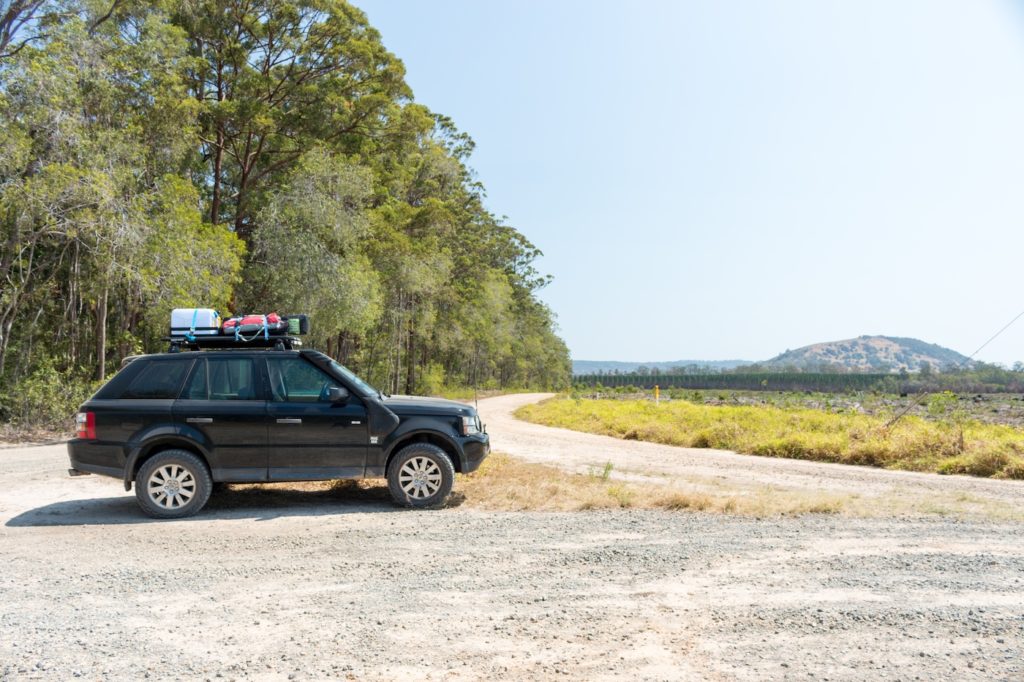
So far I’ve covered around 10,000km and I have to say I’m impressed with the noise (or lack of) when used on the road. From inside the car, they don’t really seem much different than the highway tyres they replaced. Wet weather grip has also been outstanding, with no hint of slip or aquaplaning. In terms of fuel economy, I have taken a small hit, but I would surmise that this is as much to do with the increase in tyres as it is the change from the original highway tyres. It’s not the end of the world but is worth noting.
One item of note is that they do seem quite sensitive to tyre pressures. If they are running a bit down (as in the only 5psi) on regular pressures (around 36-40psi) they do feel quite floaty on the road. I’ve not experienced this feeling on the dirt however so I’m just putting it down to a characteristic of the tyres for now.
Off Road
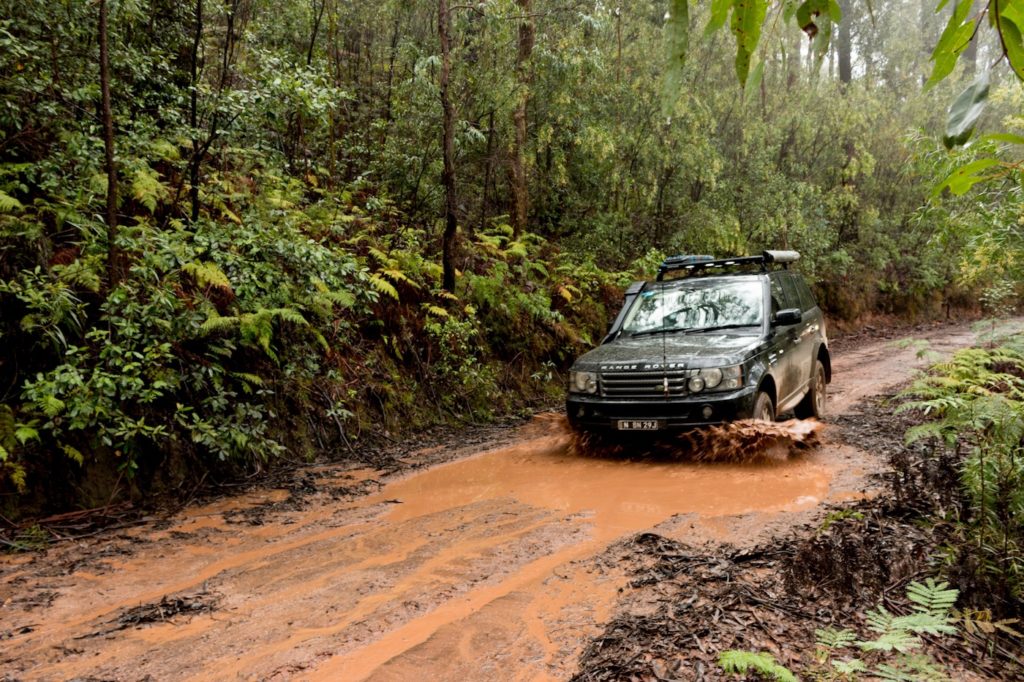
Over the past eight months, I’ve managed to do a good range of dirt road driving. Covering everything from sand and beaches, through to rocks and thick waterlogged mud. And to be fair they’ve handled it all really well. I had expected some chipping of the tread after a couple of the rocky drives but I’m happy to report they have none.
Dropping them down to 26psi seems to work well on most relatively slow and rough tracks. This being a good compromise between handling, tyre longevity and shock absorption. There have been times where I felt I should have maybe gone a little lower for a particular section but the Range Rover’s traction control system easily made up for any lost grip.
On the beach (with the tyres dropped drown to 18psi) I have found them to work well. I did notice the sidewall tread and outer lugs biting into some of the softer sections, which nearly caught me out a couple of times, but on the whole, they have handled beach driving well for a relatively aggressive all-terrain tyre.
The one area where all-terrains typically struggle is mud, the tread (being the compromise it is) just isn’t designed to cope with deep sloppy black stuff. And to be honest they did struggle a little on the really thick and slippery stuff. A few psi out, I suspect would have helped a little. But not to the extent of a full on mud tyre. This level of traction is roughly what I would have expected. An all-terrain is always a compromise. In the end, I made it through all the deep sloppy sections but there was a fair amount of slipping and sliding as the tyres struggled for grip, although they eventually dug in enough and with some turning of the wheel I had enough grip to get through the worst of the track.
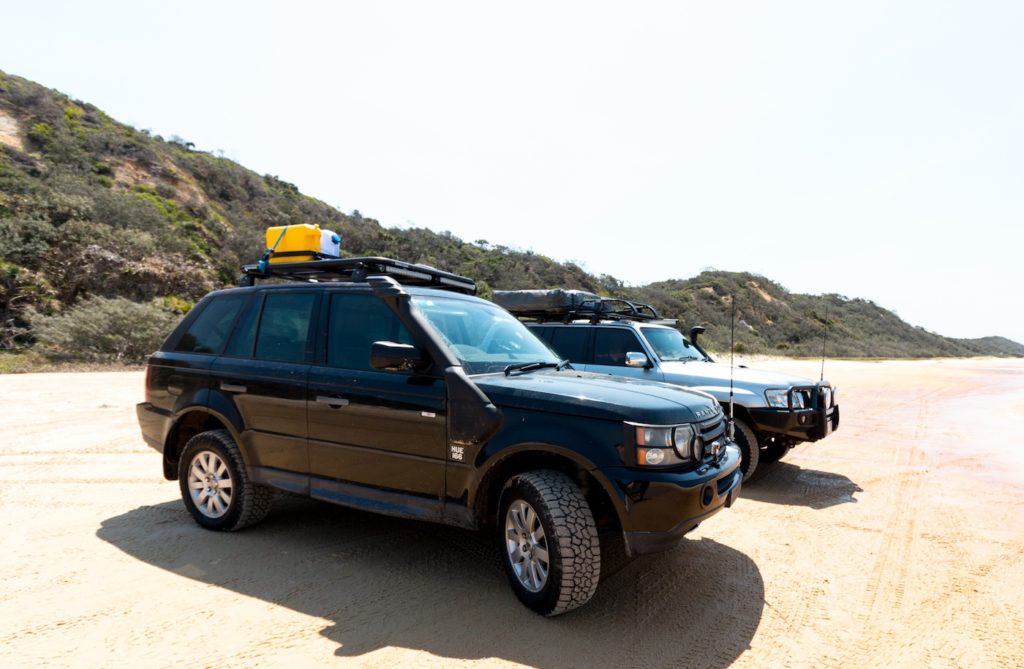
Verdict
Overall the tyres have performed very well over the last few months and are a definite step up in terms of grip and noise over the previous all-terrains I have used. They actually remind me a bit of the old BFG Trac-Edge tyres – good on the dirt and good on the road.
Despite appearing to be quite a soft tyre, tread wear seems to be very good with only minimal wear visible so far (just over 10,000km or 6,000 miles). I will keep an eye on them but so far it seems good.
Overall, I’ve been impressed with the Falken Wildpeak AT3W’s over a broad range of conditions and providing tread wear is consistent I would happily replace them with the same (albeit with an LT version) when the time comes to replace them.
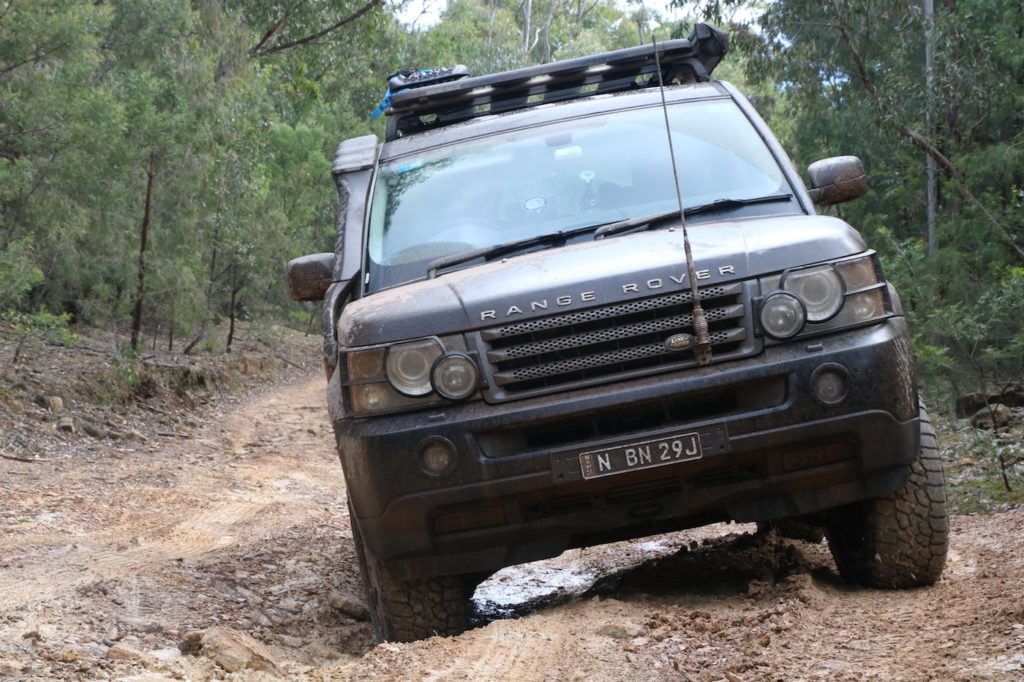
What is Overlanding?
Is Overlanding the new “authentic” tourist trap? Or is possible to still see the world as it is, and not through a guidebook style trip?
There is a certain perception around the term Overlanding or Overlander. A quick look at Instagram throws up many would be world travellers, some doing it on a shoestring whilst others seem to be using gear costing thousands of dollars in specialised rigs or campers. However (and this isn’t taking a shot at anyone), the one thing they all claim they are being authentic to the term and to their goals by travelling independently around a continent or the world in some cases.
But how many of these truly are “Living the Dream”, so to speak? How many have given up everything to travel the world and does it really matter if they haven’t?

Before everyone jumps up and down and says this and that, and that you need a certain type of vehicle to travel the world. Let me just say this, it wasn’t long ago that we all used 2WDs to explore and we seemed to manage just fine so, for me, it’s less about what you drive and more about where you go and what you experience with it.
Fortunately, or unfortunately the world, theoretically, is getting easier to traverse. Many of the classic overland routes have now been partially paved or at the very least well graded. It’s a fact of life that the more a route is used the better it is maintained, especially if it also used by local industry.
Take the Road of Bones for example. Still not an easy trek I’ll grant you, but it’s a damn site easier than it was just 15 years ago with parts of the route well graded or even paved (on the new route). Or look closer to home (for us here in Australia) there are plans to pave large parts of the Cape, it won’t be long till you can reach Cape York in a family wagon. Is this a bad thing? Some would say so, but others would look at the increase in traveller numbers and knock on effects it will have to the local economy.
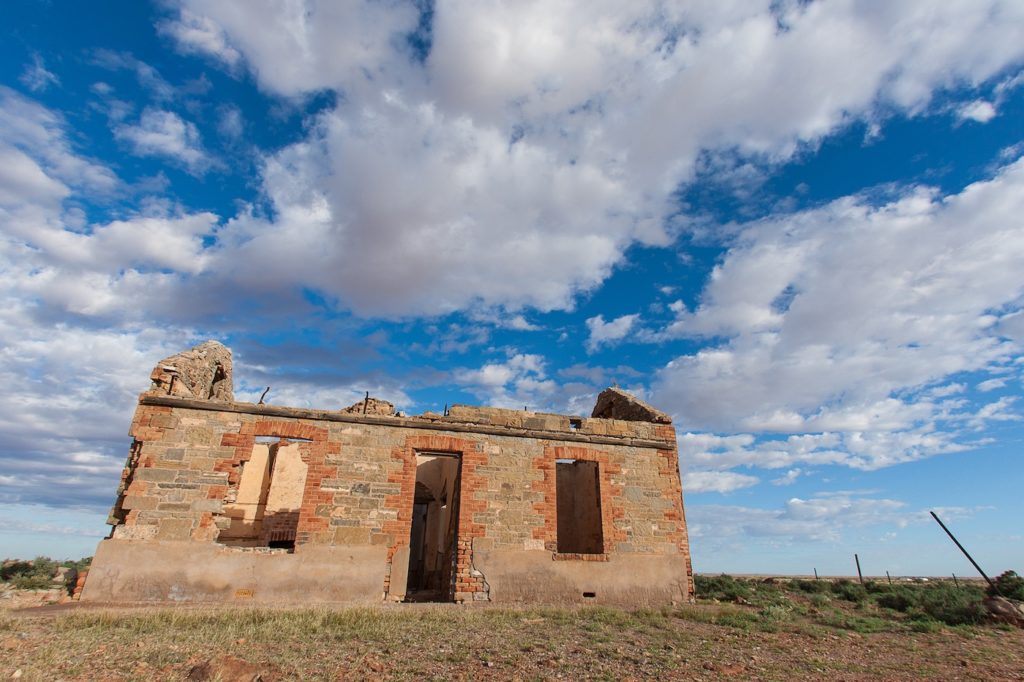
This brings me back to my earlier question, ‘Is Overlanding the new “authentic/hipster” tourist trap? Or is it still, possible to see the world as it is and not through a phone filter?’
For me it’s a no-brainer, of course, it’s still possible to see the world as it really is, we just need to open our eyes a little more, look at our surroundings and not try to record every last detail through camera phone lenses. One of the best things about overland travel, for me, is the chance to meet fellow travellers as well as locals as you move through an area, and for most this is part of the experience we all crave. They say a picture can tell a thousand words, but local interaction can help you, the traveller, understand an area and feel part of it as opposed to an outsider looking in.
So, what exactly is Overlanding and are we Overlanders?
Well according to Wikipedia: “Overlanding is self-reliant overland travel to remote destinations where the journey is the principal goal. Typically, but not exclusively, it is accomplished with mechanised off-road capable transport (from bicycles to trucks) where the principal form of lodging is camping, often lasting for extended lengths of time (months to years) and spanning international boundaries. And that “Historically, “overlanding” is an Australian term to denote the droving of livestock over very long distances to open up new country or to take livestock to market far from grazing grounds.”
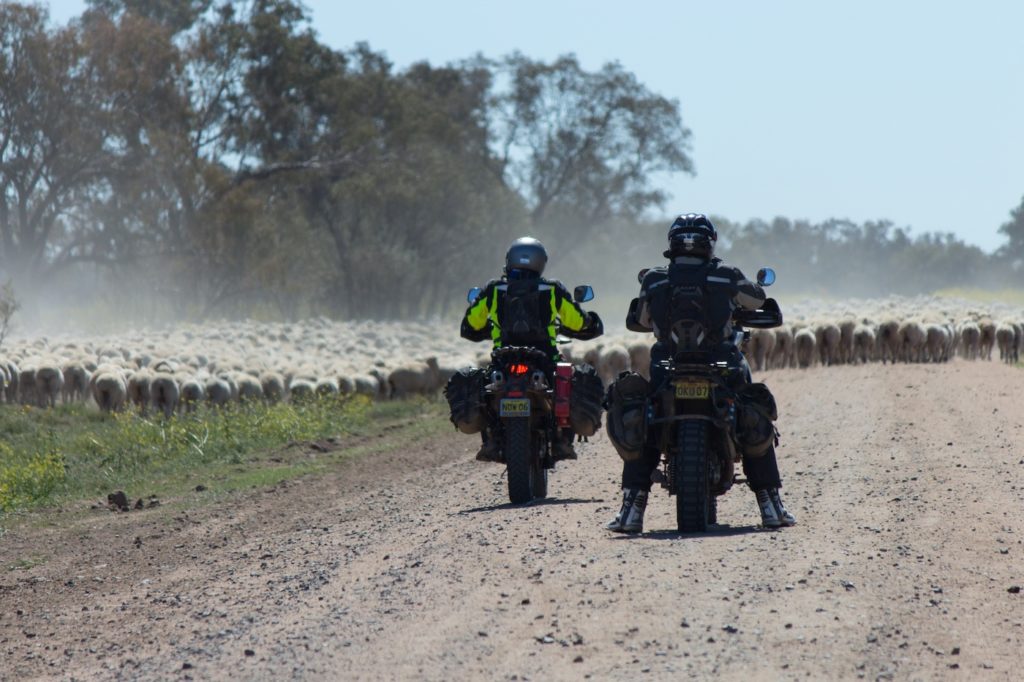
There are many different modern definitions of Overlanding and what it is, for us, at LastXplorer, we prefer to keep it really simple. Overlanding today, in its truest form is vehicle based overland or cross country travel it’s as simple as that. Whether you are on a motorbike or push bike, 4WD, wagon, van or earth cruiser, so long as you are travelling somewhere and taking the long way around, you are an overlander.
We as Overlanders generally like to take the adventurous route to get somewhere often detouring from the norm in the pursuit of a unique or challenging experience. I guess this is one of the many things that sets us all apart from the crowd. However, each one of us is different and wishes to gain their own experiences from their adventures. There is no right or wrong in this instance just differences and as such those perspectives should be encouraged and celebrated. And let’s all be honest with ourselves here, sometimes it’s nice to stop in a touristy location, soak in the warm showers and experience a guided tour. You never know you may find something that you would otherwise have missed.
At the end of the day, there is no right or wrong to overlanding, you just have to be out there experiencing what the world has to offer.
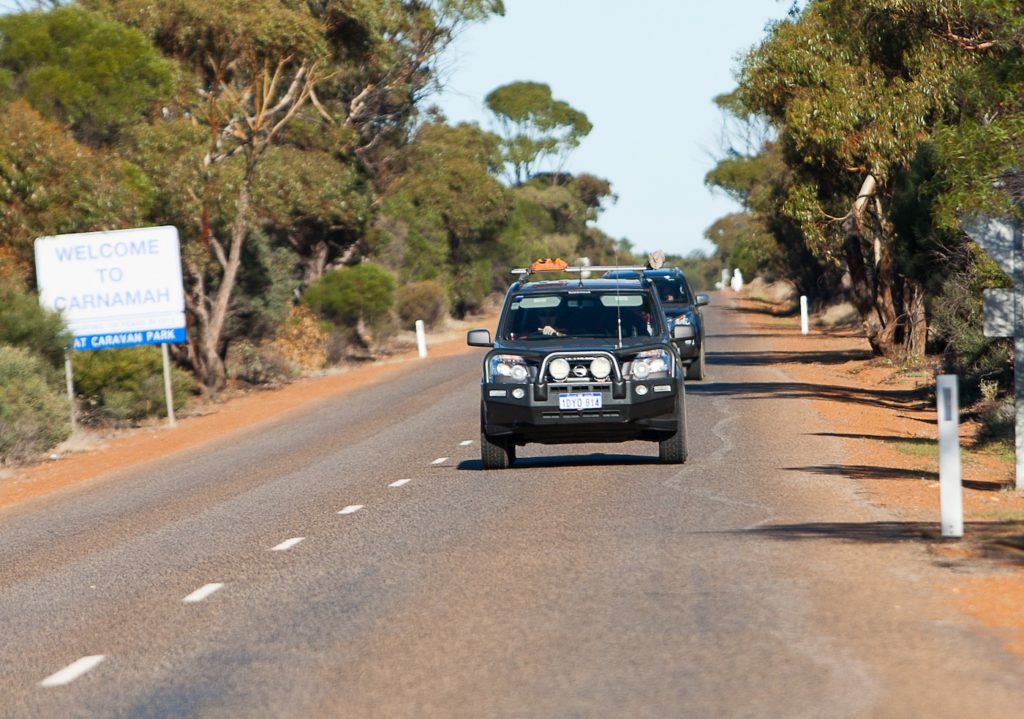
Driving A $1,000 Car Across Australia
When you talk about adventure in the Australian Outback – the first thing that comes to mind is a fully loaded 4WD with maybe a roof top tent, a swag or perhaps even a caravan.
Not steering a front wheel drive 96’ Volvo 850 CD 2.5i sedan, worth less than a thousand dollars, from Adelaide to Cairns across roads that would give any good 4WD a solid shake.
This adventure is the 2017 Sh*tbox rally – and of course, it’s for a good cause. Raising funds for the Cancer Council and their fight against cancer.

What’s The Deal (The Name Says It All)
First – you have to find a car worth less than $1,000 – that will at least make it to the start line – don’t laugh, some didn’t. There was at least one team who had a new… maybe that should be different S’box before they’d even arrived.
And now is probably a good time to mention the camaraderie this event brings out in people. Over a series of dinners, a few facebook pages and regular updates from everyone you realise how hard this event really is. And how much everyone is there, and willing to help everyone else. Part of the entry is you have to raise a minimum of $4,000.
Even before the official rally starts, when the two blokes who lost their first S’box somewhere in the middle of NSW, there were other teams in transit who picked them up, shared their gear our amongst other cars and made sure they at least made it to the start line (with another car). And this only got stronger as the rally progressed.
Buddy Groups
With 200 teams of two, you are divided up into Buddy Groups. We were the infamous Buddy Group 9. You do everything with your buddy group – if you break down – your whole group waits. If you have a food/fuel/pee break – so does your buddy group. It’s ultimately your buddy group which determines how much fun you have on the rally – and our buddy group was outstanding.
Day 2 – Bush Mechanics At Their Finest
Day 1 was fairly uneventful, we got lost after turn two. With some solid banter and a new navigator, we were back on track. Day 1 is all about getting to know your buddy group and making it to camp.
Day 2 was the first proper day on the dirt, corrugations and dips. And it was the latter which brought me (I was driving) unstuck – with a very strategically placed rock, otherwise known as a sump killer in the bottom of a dip.
I’d slowed down – just not enough, and the bang was hard. A check of the review mirror was enough to confirm there was a notorious black line following us – never a good sign. I pulled over and turned off the engine. A quick look underneath revealed a big crack and three large holes in what used to be the sump. One could only say it’d totally been destroyed.
It was a two-hour wait for a support vehicle with a trailer to pick us up and take the Iced Volvo into camp. Now I’d heard rumours the mechanics worked wonders, and whilst I hadn’t thrown in the towel, I don’t think my heart could have sunk any deeper. More for my best mate who was doing the rally with me. To have destroyed his rally too so early in the piece.
It must be said, I’d been told more than once if you don’t end up on the back of a trailer – you’re not getting the full rally experience.
So the trailer arrived, and the support guys took one look at it and said “they can fix it” without even a second glance. “You just need to find a flat bit of metal”. Whilst I was massively relieved, I was still more than a little sceptical – I mean the hole(s) were big enough to put a golf ball through. Still – these guys had been there and done it before. So I had strong hopes.
Into Oodnadatta – and whilst the buddy group were waiting for fuel, we set about finding some metal. And then we came across the kitchen sink.
3 layers of fibreglass body filler, and a custom sump protector later – we had a working S’box again. We did get nominated for best destruction and best fix… but we were pipped at the post on both of them.
Day 4 – Total Destruction
It was here our rally took a different direction. Not even the might of our mechanics could help us here. We totally destroyed the gearbox and sump. Apparently, you can’t hit a raised cattle grid (with a solid front lip) at 90km/h and expect to walk away with an in one piece gearbox and a sump which still held oil – go figure. At least the score was one each.
But this is just part of the rally.
In every briefing in the lead up to the event, you’re told – “You must leave your back seat free, because you will either end up in the back of someone’s car, or someone will end up in the back of yours. Not IF – WHEN.
It’s just part and parcel of driving cars worth less than 1000 bucks on outback Australian roads. Sometimes it is driver error, and sometimes it’s just the car just not being able to do what was asked of it (and it was a big ask).
The Route
This years route was from Adelaide to Cairns – first stop, Roxby Downs, then on to… Oodnadatta – Alice Springs – Tobermorey Station – Burke and Wills Roadhouse – Einasleigh and on to Cairns.
Massive Thanks
There are lots of people to thank – especially all the people who donate to us. We raised a huge $6,672 – which is very humbling. To Kumho tyres – for donating a full set of rubber to our team, including two spares. This was a god send!
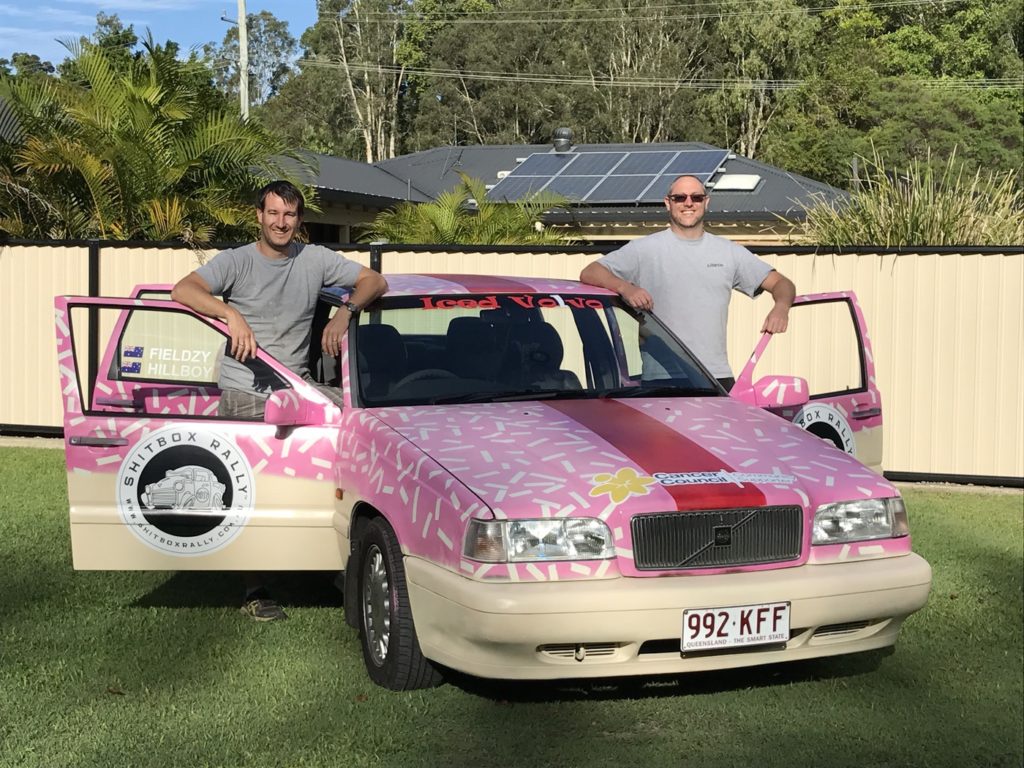
It’s Not Just A Challenge…
It changes you, just a little bit at your core. For me, this started out as just another adventure. Whilst cancer has struck our family I’ve been too young to remember or too far removed. Being on the rally made it all very real. Travelling with people who’d survived, people who lost loved ones and people who were in the middle of their battle. There was a depth of emotion I wasn’t expecting. I hope to do it again – but if I don’t it is something I will always remember.
Update: I’m in for 2018. My sister and I – Brisbane to Darwin.
Like what you’ve read – need a bit more…
Get The December Issue Free
Just to say thank you for stopping by…
For February only, you can get the December Issue of LasXplorer free.
This is a rock solid issue with some very cool trips in it! Check it out…
More Free Articles
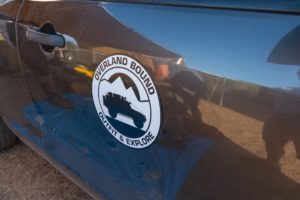
Overland Bound Off the Grid Rally 2017
“We were invited along to the Queensland Overland Bound OTGR, an event where the emphasis is on the community, not just adventure.” https://vimeo.com/250282485 Overland Community

The First Of Many
Our first trip as LastXplorer was supposed to go without a hitch and it did… almost A rough plan was beginning to formulate. We wanted
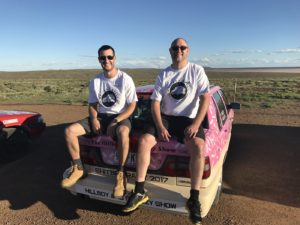
Driving A $1,000 Car Across Australia
When you talk about adventure in the Australian Outback – the first thing that comes to mind is a fully loaded 4WD with maybe a


